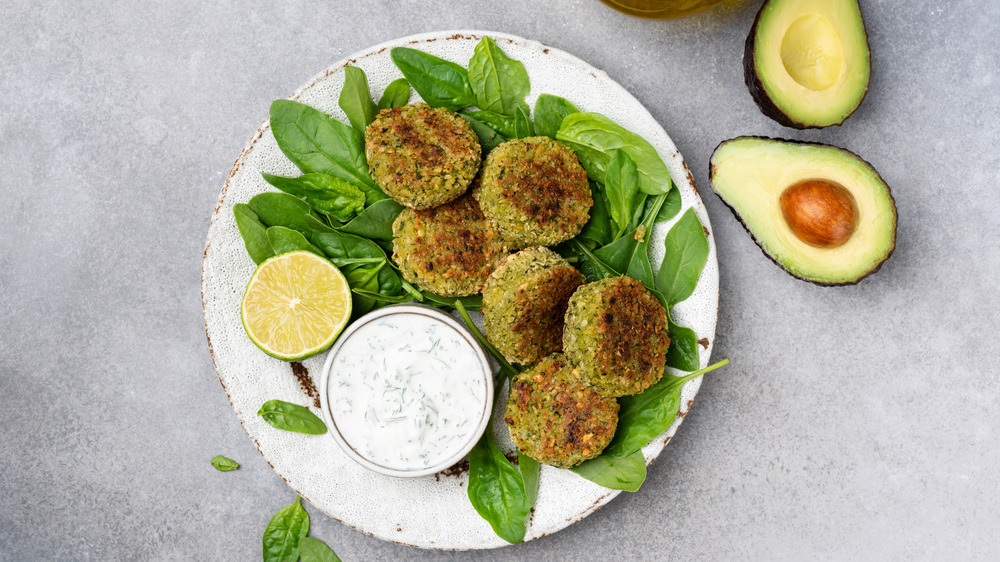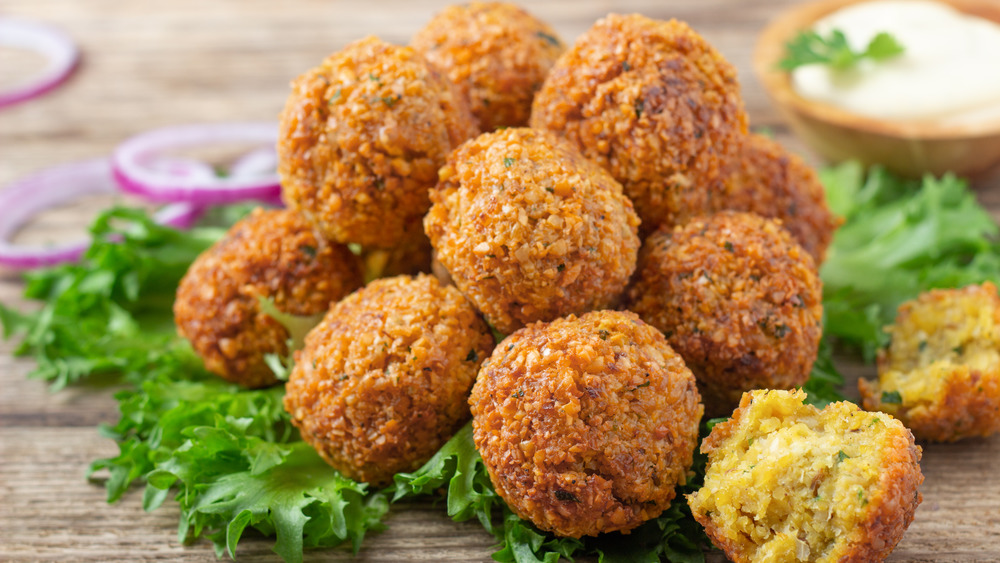How Authentic Falafel Is Different From The American Version
While we tend to assume that some dishes are unique to a particular food culture, the origins of many things we love to eat aren't as clear as we think they are. For instance, who would have guessed that the croissant, which is as French as it gets, didn't actually come from France, but was actually inspired by a 17th-century Austrian pastry known as the kipfel, which was loaded with butter or lard, and which could be laced with sugar and almonds (via Smithsonian Magazine)?
The same could be said of the falafel, which some of us might have thought was strictly Jewish, but whose origins are as murky as the croissant's or another well-loved dish of Middle Eastern origin, hummus. The falafel is no orphan; in fact, many countries around the region have stepped forward to claim it as their own, including Yemen and Lebanon.
One thing is certain: History Today points out that the falafel was born and raised in Egypt, and contrary to popular belief, couldn't date back to biblical days because there is no mention of it in ancient texts. In fact, the site says the dish could have been invented in the late 1800s, and as a local response to the British request for Indian-style vegetable fritters. Its main ingredient was something commonly found in the area, the fava bean – which explains why Egyptian falafels or taameya (via Egyptian Streets) – have a green tint.
Falafel ingredients changed as the dish traveled the region
The migratory patterns practiced by falafel fans meant that it would only be a matter of time before the dish began meandering around the region. The first falafel shop opened in Lebanon's capital Beiruit in 1933 thanks to the efforts of one Mustafa Sahyoun. Meanwhile, it morphed as it made its way north to Turkey, west to Libya, and south to Yemen (via History Today). Haaretz says the falafel was eventually adopted by Yemeni Jews who adapted the chickpea version of this beloved dish, enveloped falafels in the generous embrace of pita bread, and made it their own. It is the chickpea version that exists in America today.
Other than the swap between fava beans and broad beans, there isn't much difference between the authentic and American versions of falafel. Both call for the use of dried beans, and both call for an almost identical spice and herb blend. Even as he shared his fava bean-based falafel recipe, Egyptian chef Moustafa Elrefaey tells The Guardian you might even want to mix chickpeas and fava beans just to stir things up a bit. Just make sure this vegetarian classic is crisp, crumbly, and served hot.

